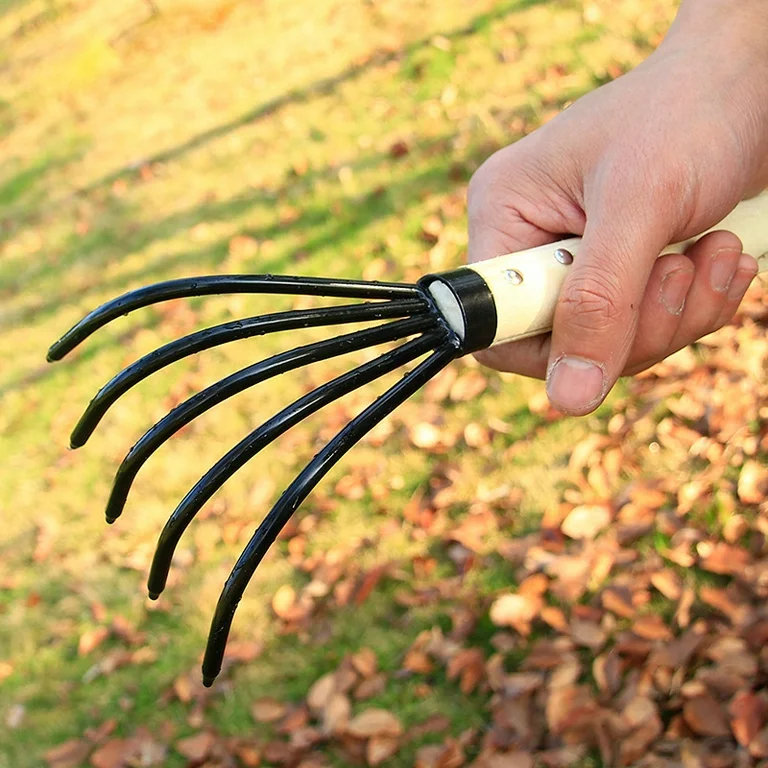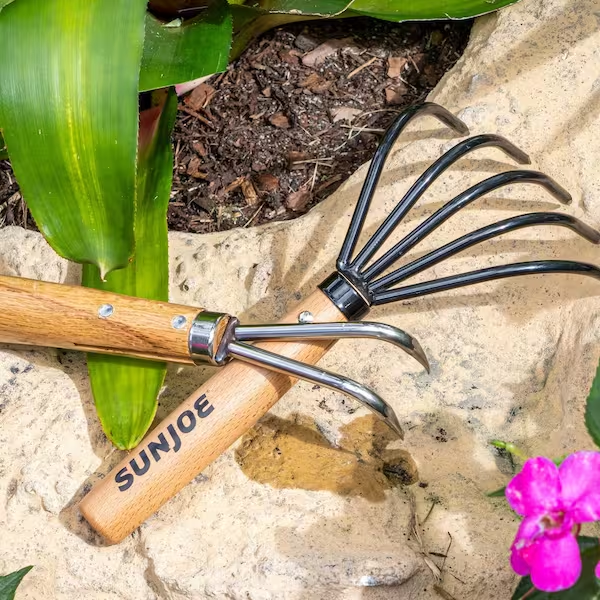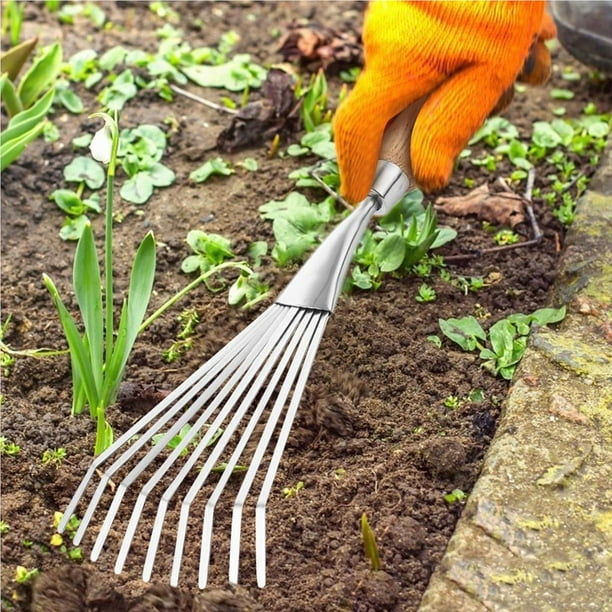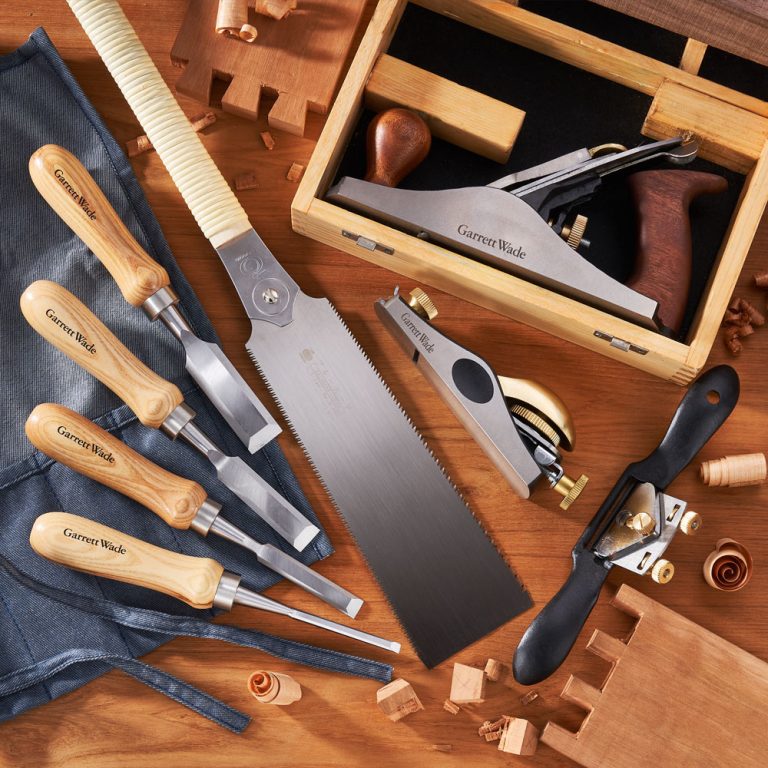The Evolution of the Gardening Rake
Gardening rakes have stood the test of time as indispensable tools for cultivating and maintaining outdoor spaces. These versatile implements trace their roots back to ancient civilizations, where early farmers used rudimentary rakes fashioned from wood and bone to tend their crops. As agriculture evolved, so did the design and functionality of rakes. The Industrial Revolution brought about mass production techniques, leading to more affordable and widely available gardening tools. Metal tines replaced wooden ones, offering increased durability and efficiency. Today, gardening rake come in a variety of materials, including stainless steel, aluminum, and high-grade plastics.
Each iteration has built upon the basic design to address specific gardening needs and challenges. Modern rakes feature ergonomic handles, adjustable heads, and specialized tines for different tasks. The evolution of the gardening rake reflects humanity’s ongoing quest to cultivate and shape the natural world around us. From humble beginnings as simple farming implements to the diverse array of options available today, rakes continue to play a crucial role in gardening and landscaping.
Their enduring presence in gardens worldwide speaks to their effectiveness and versatility. As gardening techniques and trends change, rake designs adapt to meet new demands. The introduction of eco-friendly materials and sustainable manufacturing processes has also influenced the development of gardening rakes. Some contemporary models incorporate recycled materials or feature biodegradable components, appealing to environmentally conscious gardeners.
Types of Gardening Rakes and Their Specific Uses
Gardening rakes come in various forms, each designed for specific tasks in the garden. Understanding the different types of rakes and their uses can significantly enhance gardening efficiency and effectiveness. Leaf rakes, also known as lawn rakes, feature wide, fan-shaped heads with flexible tines. These rakes excel at gathering leaves, grass clippings, and other light debris from lawns and garden beds. The flexible tines allow for gentle raking without damaging delicate grass or plants.
Leaf rakes often have wooden or plastic handles to keep them lightweight for extended use. Bow rakes, characterized by their short, sturdy metal tines arranged in a straight line, serve multiple purposes in the garden. These versatile tools can break up compacted soil, level ground, and spread mulch or other materials evenly. The strength of bow rakes makes them ideal for more demanding tasks that require greater force. Gardeners often use bow rakes to prepare soil for planting or to smooth out areas after major landscaping work.
Shrub rakes, featuring a narrow head and short, stiff tines, allow gardeners to access tight spaces between plants or along fences and walls. These specialized rakes prove invaluable for maintaining areas where larger rakes cannot reach. Shrub rakes help remove debris and dead leaves from densely planted areas without causing damage to surrounding vegetation. Their compact design makes them essential tools for detail-oriented garden maintenance. Thatch rakes, designed with sharp, knife-like blades instead of traditional tines, serve a specific purpose in lawn care. These rakes remove thatch, the layer of dead grass and roots that accumulates between the soil surface and living grass blades.
Choosing the Right Rake for Your Gardening Needs
Selecting the appropriate rake for specific gardening tasks can significantly impact the efficiency and enjoyment of outdoor work. Several factors come into play when choosing the right rake, including the size of the garden, the types of plants being cultivated, and the primary tasks at hand. For large gardens or expansive lawns, a wide leaf rake with a long handle proves most effective for gathering fallen leaves and debris. The extended reach minimizes bending and reduces strain on the back during prolonged use. Conversely, smaller gardens or those with intricate landscaping may benefit from more compact rakes that offer greater maneuverability.
The material composition of the rake also warrants consideration. Metal rakes, while durable and strong, may damage delicate plants or grass if used carelessly. Plastic rakes offer a gentler touch but may lack the strength needed for heavy-duty tasks. Some gardeners opt for rakes with interchangeable heads, allowing for versatility without the need for multiple tools. These modular systems can be particularly useful for those with limited storage space or varied gardening needs. The handle design plays a crucial role in user comfort and efficiency. Ergonomic handles with cushioned grips reduce hand fatigue during extended use. Adjustable-length handles accommodate users of different heights, ensuring proper posture and reducing the risk of back strain.
Some rakes feature telescoping handles that can be extended for reaching high branches or collapsed for easy storage. The weight of the rake should also factor into the decision-making process. Lighter rakes may be preferable for those with limited strength or for tasks requiring extended use. However, heavier rakes often provide more stability and power for demanding jobs like breaking up compacted soil. Striking a balance between weight and functionality ensures optimal performance without unnecessary strain. Consider the specific tasks the rake will perform most frequently.
Proper Techniques for Using Gardening Rakes Effectively
Mastering proper raking techniques maximizes efficiency and minimizes physical strain during gardening tasks. When using a leaf rake, employ a smooth, sweeping motion to gather debris without damaging the lawn or underlying plants. Keep the rake at a consistent angle to the ground, typically around 45 degrees, to maintain optimal contact with the surface. Avoid applying excessive downward pressure, which can tear grass or compact soil. Instead, let the weight of the rake head do most of the work. For larger areas, divide the space into manageable sections and work systematically to ensure thorough coverage.
When using a bow rake for soil preparation, adopt a different approach. Hold the rake with both hands, one near the top of the handle and the other about halfway down for better control. Use short, choppy strokes to break up clumps of soil or spread materials evenly. The tines should penetrate the soil surface to achieve the desired effect. To level an area, drag the rake backwards with the tines angled slightly upwards to create a smooth finish. For dethatching with a specialized rake, maintain a firm grip and use controlled, short strokes to avoid damaging healthy grass.
Pull the rake towards you, allowing the blades to penetrate the thatch layer without digging too deeply into the soil. Overlap each pass slightly to ensure complete coverage of the area. After dethatching, rake up the loosened material with a leaf rake to promote air circulation and new growth. When working with shrub rakes in tight spaces, use gentle, precise movements to avoid damaging nearby plants. The narrow head allows for targeted debris removal between delicate foliage or along garden borders.
Maintaining and Caring for Your Gardening Rakes
Proper maintenance of gardening rakes ensures their longevity and optimal performance. After each use, remove any dirt, debris, or plant matter from the rake head and handle. For metal rakes, use a wire brush to scrub away stubborn soil or rust spots. Wooden handles benefit from occasional sanding to prevent splinters and maintain a smooth surface. Apply a coat of linseed oil to wooden handles annually to protect against moisture and prevent cracking.
Store rakes in a dry, covered area to prevent exposure to the elements. Hanging rakes on a wall or storing them in a vertical rack keeps them organized and prevents damage to the tines or handle. Inspect rakes regularly for signs of wear or damage. Tighten any loose screws or bolts that secure the head to the handle. Replace broken or severely bent tines promptly to maintain the rake’s effectiveness. For rakes with moving parts, such as adjustable heads or telescoping handles, apply a light lubricant to keep the mechanisms functioning smoothly.
Clean and dry these components thoroughly before storage to prevent rust or corrosion. Sharpen the blades of thatch rakes periodically to maintain their cutting efficiency. Use a file or grinding wheel to hone the edges, following the original angle of the blades. Wear protective gloves and eyewear when sharpening to ensure safety. Consider applying a rust-inhibiting spray to metal parts, especially if storing rakes in humid environments. This extra layer of protection helps extend the life of the tool and maintains its appearance. By implementing these maintenance practices, gardeners can ensure their rakes remain in top condition for years of reliable service.
Innovative Rake Designs and Technologies
The gardening industry continually introduces innovative rake designs to address evolving needs and preferences. Ergonomic rakes feature curved handles or adjustable grips that reduce strain on wrists and arms during extended use. These designs promote better posture and increased comfort, making raking tasks less physically demanding. Some modern rakes incorporate telescoping handles that adjust to different lengths, accommodating users of various heights and reaching high or distant areas with ease. Collapsible rakes offer convenient storage solutions for gardeners with limited space. These models feature heads that fold or detach, allowing for compact storage in small sheds or garages.
Despite their collapsible nature, many of these rakes maintain the strength and durability of traditional fixed designs. Multi-function rakes combine several tools in one, such as a rake head with a cultivator attachment or a built-in weed puller. These versatile implements reduce the number of tools needed for basic gardening tasks, streamlining work and saving storage space. Some manufacturers have introduced rakes with interchangeable heads, allowing users to switch between different types of rakes using a single handle. This modular approach offers flexibility and cost-effectiveness for gardeners with diverse needs. Eco-friendly rake designs incorporate sustainable materials like bamboo or recycled plastics.
The Role of Rakes in Sustainable Gardening Practices
Gardening rakes play a significant role in promoting sustainable gardening practices. By facilitating the collection and redistribution of organic matter, rakes help gardeners create closed-loop systems within their gardens. Leaf rakes gather fallen leaves and plant debris, which can be composted or used as mulch. This practice returns valuable nutrients to the soil, reducing the need for synthetic fertilizers. Rakes also aid in the even distribution of mulch around plants, conserving soil moisture and suppressing weed growth.
This natural approach to weed control minimizes the use of chemical herbicides, promoting a healthier garden ecosystem. Bow rakes assist in creating and maintaining raised beds, an efficient gardening method that maximizes space and improves soil drainage. Raised beds often require less water than traditional garden plots, contributing to water conservation efforts. The use of rakes in soil preparation reduces the need for gas-powered tillers, decreasing the carbon footprint associated with garden maintenance. Hand-powered tools like rakes allow gardeners to tend their plots without relying on fossil fuels. Thatch rakes promote lawn health without resorting to chemical treatments.
By removing dead grass and promoting air circulation, these tools support natural turf vigor. Healthy lawns sequester carbon more effectively, contributing to overall environmental health. Rakes facilitate the implementation of no-dig gardening methods, which preserve soil structure and protect beneficial microorganisms. This approach aligns with sustainable gardening principles by minimizing soil disturbance and promoting long-term soil health. By incorporating rakes into their gardening routines, individuals can significantly reduce their environmental impact while maintaining beautiful and productive outdoor spaces.
Community and Cultural Aspects of Gardening with Rakes
Gardening rakes often serve as symbols of community engagement and cultural traditions. Many neighborhoods organize annual leaf-raking events, bringing residents together to clean up public spaces and assist elderly or disabled community members. These activities foster a sense of unity and shared responsibility for the local environment. In some cultures, the act of raking holds spiritual or meditative significance. Zen gardens, for example, use specialized rakes to create intricate patterns in gravel or sand, promoting mindfulness and reflection. The rhythmic motion of raking can provide a calming, contemplative experience for gardeners of all backgrounds. Community gardens often rely on shared tools, including rakes, to maintain common areas.
This shared resource model promotes cooperation and resource efficiency within gardening groups. Rakes feature prominently in gardening education programs, teaching children and adults alike about soil preparation, composting, and general garden maintenance. These hands-on lessons using simple tools like rakes can spark a lifelong interest in horticulture and environmental stewardship. Raking events have become popular fundraising activities for schools and community organizations.
Participants collect pledges based on the amount of yard work completed, combining physical activity with charitable giving. Some artists incorporate rakes and raking patterns into their work, creating temporary land art or exploring themes of human interaction with nature. These artistic expressions challenge viewers to consider the aesthetic and cultural significance of everyday gardening tools. By recognizing the communal and cultural aspects of gardening with rakes, individuals can appreciate these tools not just for their practical uses, but also for their role in bringing people together and preserving traditions.
Conclusion: The Timeless Value of Gardening Rake
Gardening rake stand as testament to the enduring relationship between humans and the cultivated landscape. These simple yet versatile tools have evolved alongside gardening practices, adapting to meet the changing needs of horticulturists and landscapers through the ages. From their humble origins as agricultural implements to their current status as essential components of the modern gardener’s toolkit, rakes continue to prove their worth in maintaining and beautifying outdoor spaces.
The wide variety of rake types available today reflects the diverse needs of gardeners and the complex nature of plant care. Each design, from the broad sweep of a leaf rake to the precision of a hand cultivator, serves a specific purpose in the garden. This specialization allows gardeners to approach their work with greater efficiency and effectiveness, tackling tasks ranging from large-scale lawn maintenance to delicate work around prized flowerbeds. The role of rakes in promoting sustainable gardening practices underscores their relevance in contemporary horticulture.











